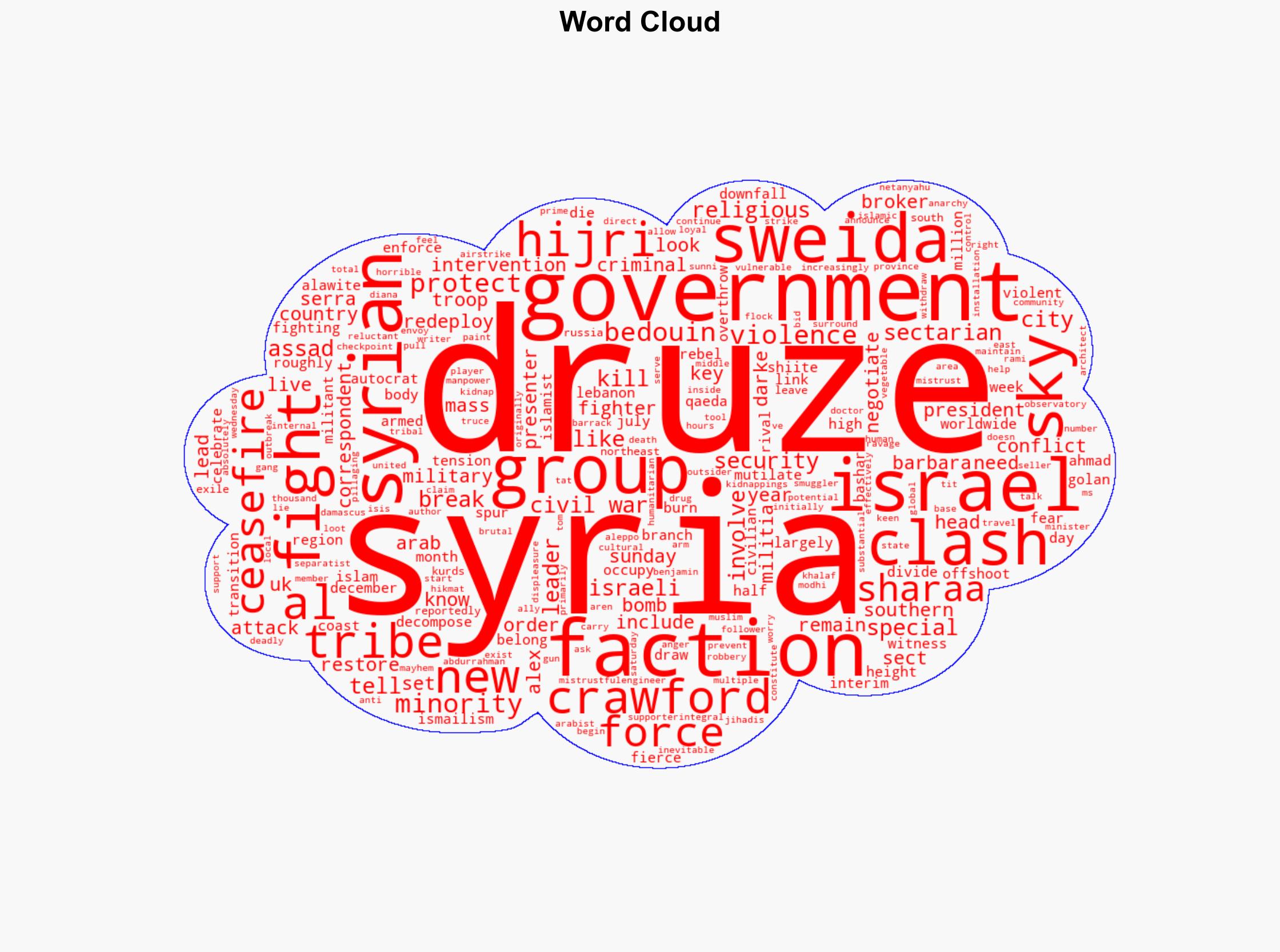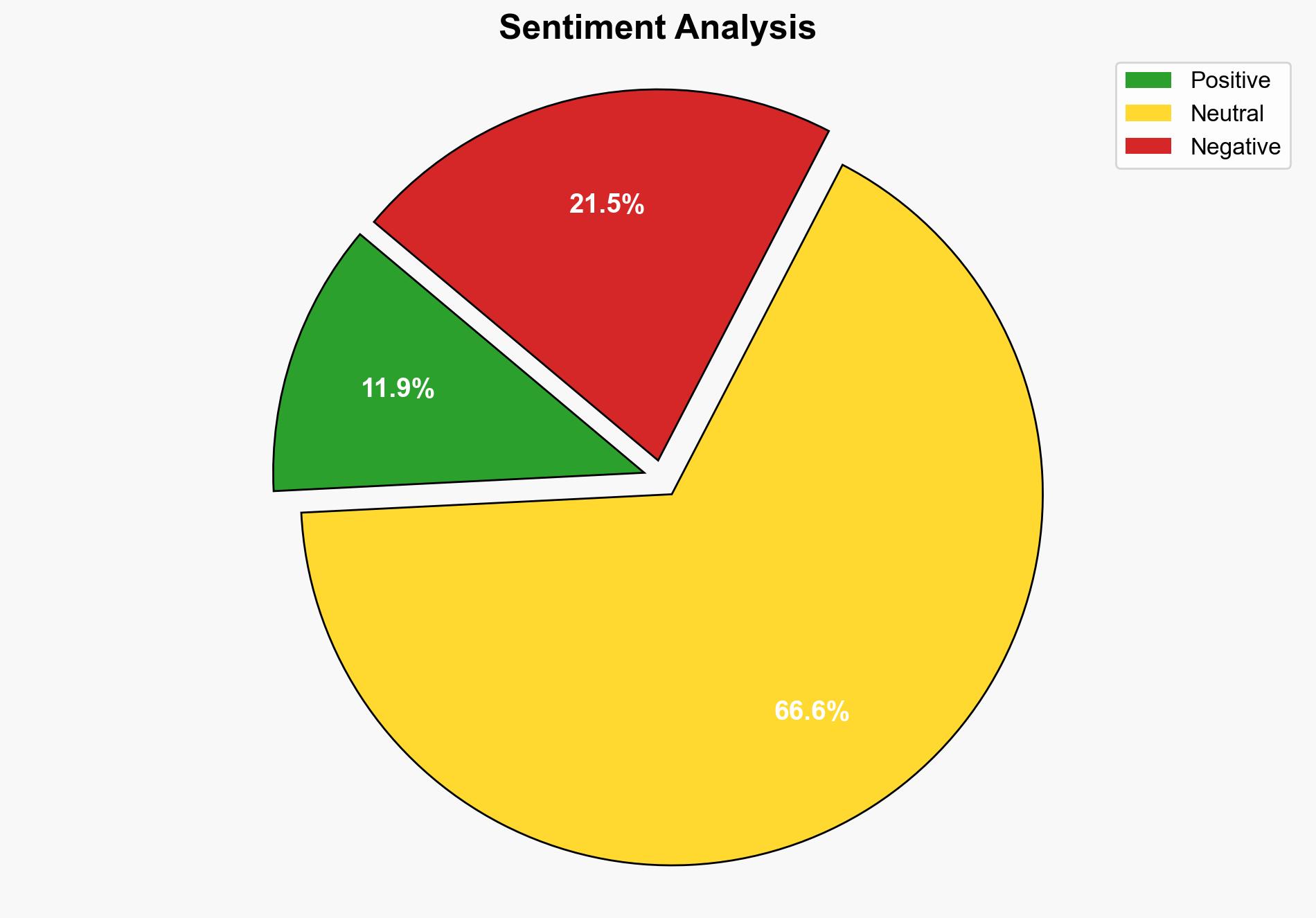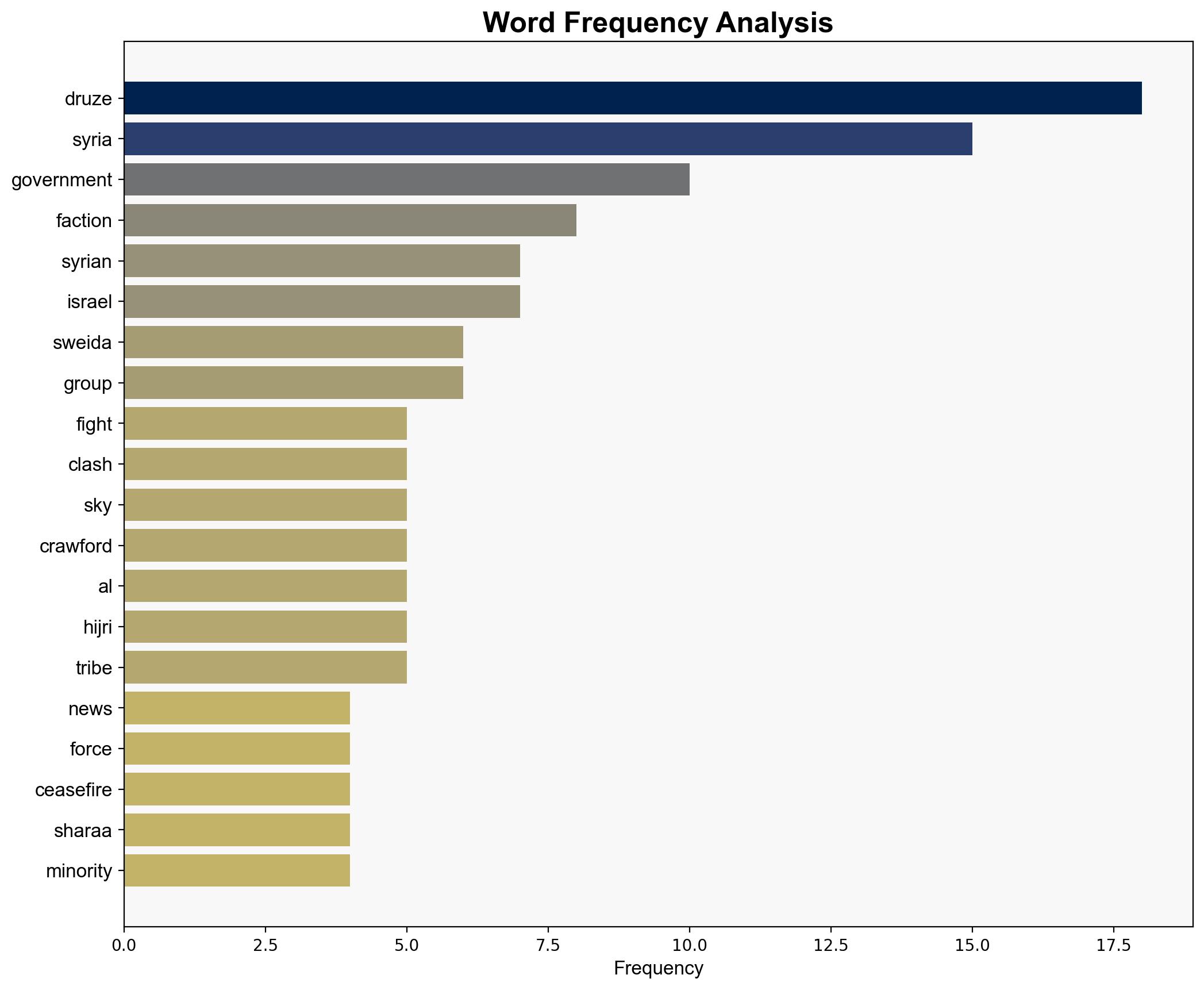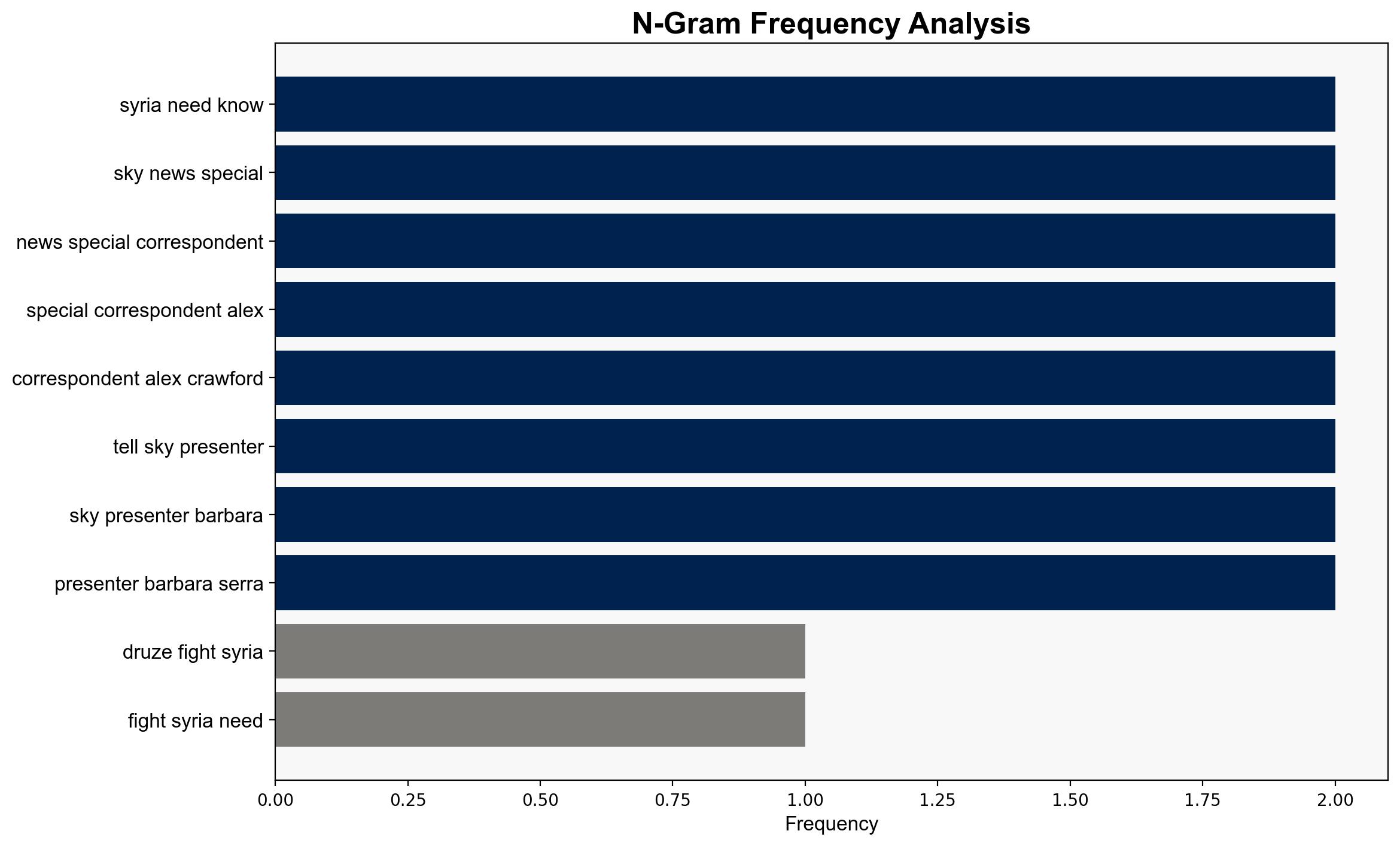Who are the Druze who are they fighting and why did latest Syrian conflict begin – Sky.com
Published on: 2025-07-20
Intelligence Report: Who are the Druze who are they fighting and why did latest Syrian conflict begin – Sky.com
1. BLUF (Bottom Line Up Front)
The recent conflict in Syria involving the Druze community highlights escalating sectarian tensions and the potential for broader regional instability. The Druze, a religious minority in Syria, are engaged in clashes with local Sunni Muslim Bedouin tribes, exacerbated by the Syrian government’s inability to maintain control. The involvement of external actors, such as Israel, further complicates the situation. Strategic recommendations include monitoring sectarian dynamics, enhancing diplomatic efforts to mediate tensions, and preparing for potential humanitarian interventions.
2. Detailed Analysis
The following structured analytic techniques have been applied to ensure methodological consistency:
ACH 2.0
The Druze community’s actions appear driven by self-preservation amid a volatile environment, with mistrust towards both the Syrian government and Islamist factions. The Bedouin tribes, meanwhile, are reacting to perceived threats and opportunities for territorial control.
Indicators Development
Monitoring online communications and travel patterns of key actors can provide early warning of escalations or shifts in alliances.
Narrative Pattern Analysis
Propaganda and recruitment narratives are likely to exploit sectarian divides, emphasizing protection and survival themes among the Druze and Bedouin communities.
3. Implications and Strategic Risks
The conflict risks destabilizing southern Syria, potentially drawing in neighboring countries and non-state actors. The sectarian nature of the clashes could lead to wider regional unrest, affecting geopolitical alliances and security dynamics. Economic disruptions and humanitarian crises are likely if violence continues.
4. Recommendations and Outlook
- Enhance intelligence sharing with regional partners to anticipate and mitigate spillover effects.
- Facilitate dialogue between Druze leaders and Bedouin tribes to de-escalate tensions.
- Scenario Projections:
- Best Case: Successful mediation leads to a sustainable ceasefire and stabilization efforts.
- Worst Case: Escalation into a broader sectarian conflict involving regional powers.
- Most Likely: Continued low-intensity conflict with intermittent ceasefires and localized violence.
5. Key Individuals and Entities
Ahmad al-Sharaa, Hikmat al-Hijri, Khalaf al-Modhi, Rami Abdurrahman, Benjamin Netanyahu, Diana Darke
6. Thematic Tags
national security threats, sectarian conflict, regional stability, humanitarian crisis, geopolitical dynamics




